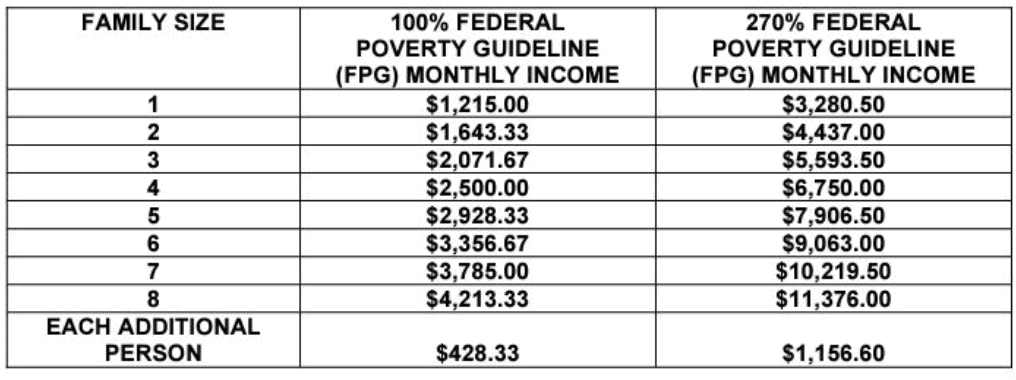Understanding Qualifying Factors in UPK Colorado
If funding allows, some children who are “low-income” (household income at or below 270% of the federal poverty guidelines – see image below) AND have a “qualifying factor” may qualify for additional UPK funding/hours.
These qualifying factors include:
- Child is identified as homeless and/or unhoused.
- Child is multilingual, learning two or more languages at the same time.
- Child is eligible for special education with an Individualized Education Program (IEP).
- Child lives “in poverty”, or has household income less than 100% of the federal poverty guidelines.
- Child is currently in foster or kinship care.
To find out more information on qualifying factors and federal poverty guidelines here.
IMPORTANT NOTE: Additional hours are not guaranteed as they depend on confirmation of a family’s eligibility and available funding.
Federal Poverty Guidelines 
Notes on Household Size & Income

Annual household income is defined as
The total combined pre-tax income received by all members of a household within a 12 month period.
This includes pre-tax wages, salaries, self-employment earnings, Social Security benefits, pensions, retirement income welfare payments, and income from other sources.
Household size is defined as
The number of people who occupy a housing unit as their usual place of residence.
For example, if you are a household with 2 adults and 1 child, your household size is “3.” If your household consists of 3 adults and 3 children, please enter “6”.
Low-Income Vs. In Poverty
To be considered ‘low-income,’ a child’s parent or guardian’s gross monthly income must not exceed 270% of the Federal Poverty Guideline (FPG), based on household size as shown in the table.
To be considered ‘in poverty,” a child’s parent or guardian’s gross monthly income must not exceed 100% of the Federal Poverty Guideline (FPG), based on the household size as shown in the table.

